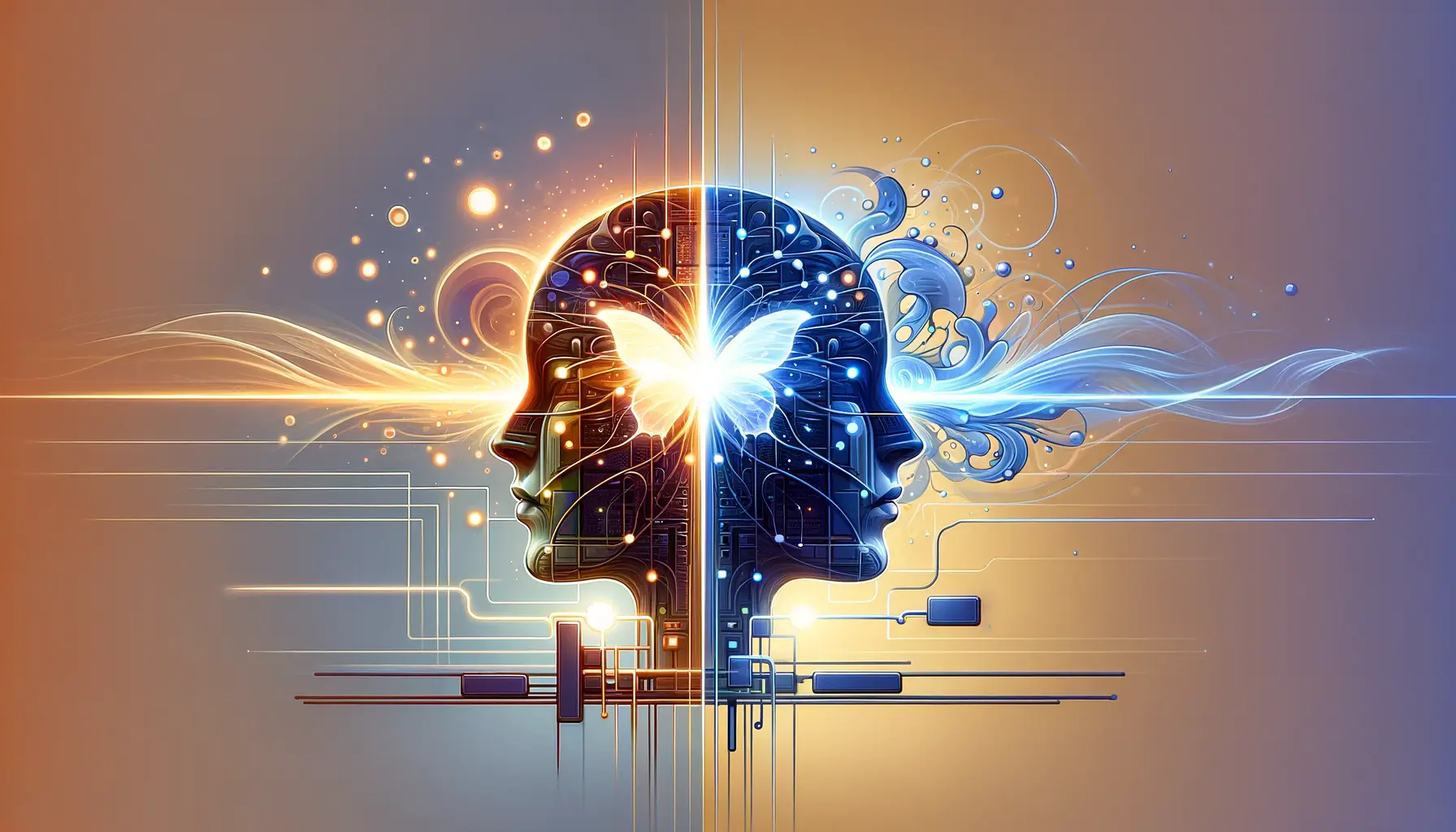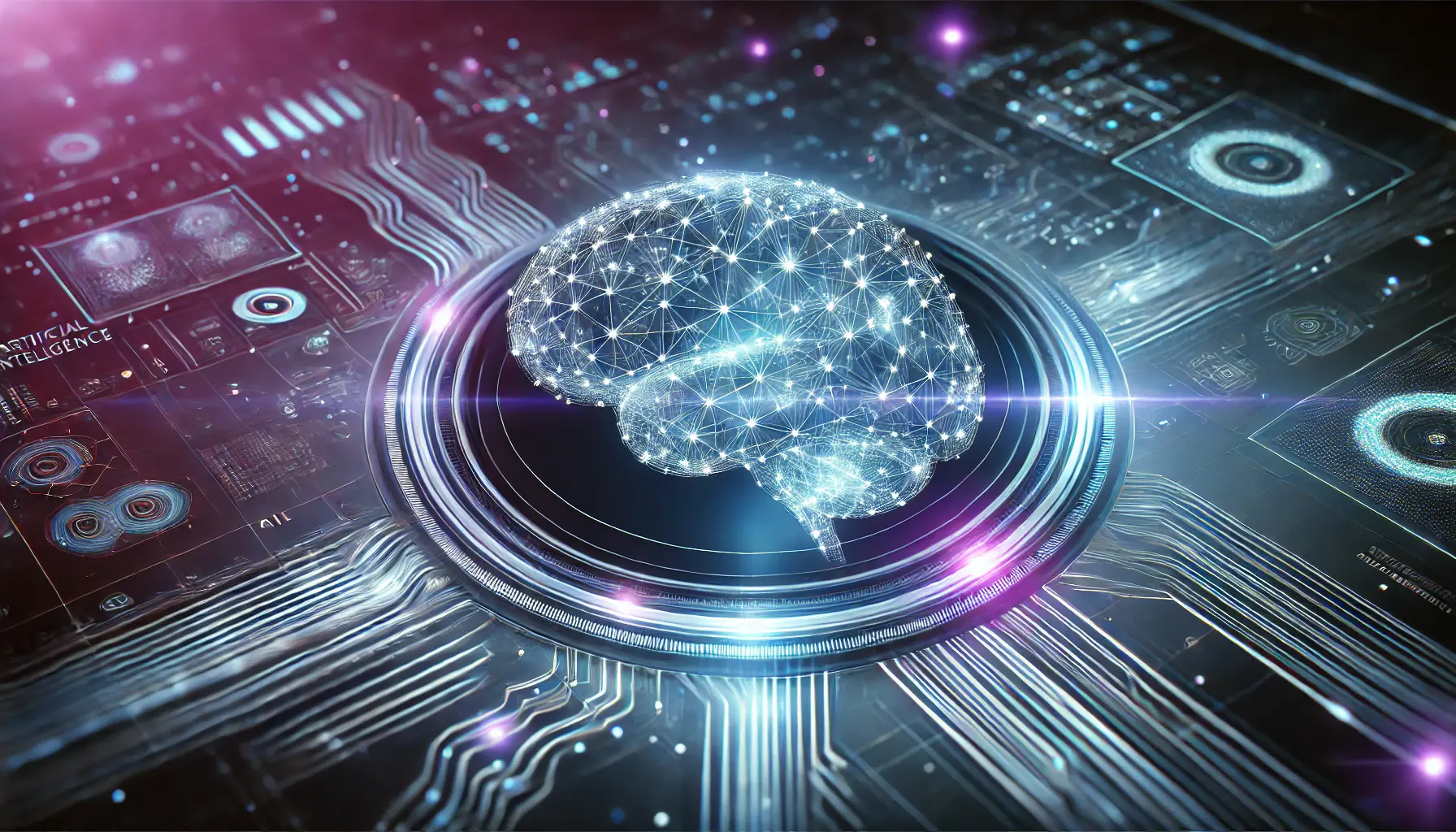In the rapidly evolving landscape of digital content creation, the emergence of Google’s Bard has sparked a revolution, challenging the status quo of traditional writing tools.
This innovative AI, developed by Google, stands at the forefront of the next generation of content creation, promising to redefine how we approach writing, from crafting simple emails to generating complex analytical reports.
The comparison between Google’s Bard and traditional writing tools is not just a matter of technological advancement but a reflection of a broader shift in the digital ecosystem towards more intelligent, efficient, and intuitive methods of content generation.
At its core, Google’s Bard leverages the power of artificial intelligence to understand and generate human-like text, offering a level of creativity and efficiency that traditional writing tools struggle to match.
This comparison delves into the capabilities, advantages, and potential implications of integrating such AI-driven tools into our daily writing practices.
As we explore this comparison, it becomes evident that the advent of Bard and similar technologies is not merely an incremental improvement but a transformative leap forward in how we conceive and execute written communication.
- Understanding Google’s Bard
- Comparing Bard with Traditional Writing Tools
- The Impact of Bard on Content Creation
- Challenges and Considerations in Adopting Bard
- Optimizing Content Strategy with Bard
- Future Trends in AI-Powered Content Creation
- Best Practices for Integrating Bard into Content Workflows
- Measuring the Success of Bard in Content Creation
- Embracing the Future with Google’s Bard
- FAQs on Google’s Bard: Insights and Answers
Understanding Google’s Bard
Google’s Bard, a product of years of research and development in the field of artificial intelligence, represents a significant milestone in natural language processing (NLP) and machine learning.
By drawing on vast databases of language and information from the web, Bard is designed to understand context, generate ideas, and provide writing assistance with unprecedented accuracy.
Unlike traditional writing tools that rely on static algorithms and pre-defined templates, Bard’s dynamic learning model allows it to adapt and improve over time, reflecting the latest trends, information, and linguistic nuances.
The introduction of Bard into the writing landscape offers a glimpse into a future where AI assists in overcoming the limitations of human creativity and efficiency.
For content creators, marketers, and professionals across various industries, Bard promises not only to enhance the quality of writing but also to streamline the creative process, enabling the generation of content that is both engaging and informative.
The implications of such technology extend beyond mere convenience, suggesting a paradigm shift in how we approach the creation and dissemination of written content.
Comparing Bard with Traditional Writing Tools
Traditional writing tools, from basic word processors to more sophisticated content management systems, have long been the backbone of digital content creation.
These tools offer a range of features designed to facilitate the writing process, including spell check, grammar correction, and formatting options.
However, their capabilities are inherently limited by the lack of contextual understanding and creativity.
They serve more as aids in the mechanical aspects of writing rather than as partners in the creative process.
In contrast, Bard’s AI-driven approach enables a deeper level of interaction with the content creator.
It can suggest ideas, rephrase sentences for better clarity or impact, and even generate entire sections of text based on a brief input.
This not only saves time but also opens up new possibilities for creativity and content personalization.
The comparison between Bard and traditional writing tools ultimately highlights the transition from passive support to active collaboration in the writing process, marking a significant evolution in how we produce digital content.
Advantages of Bard Over Traditional Tools
The advantages of Google’s Bard over traditional writing tools are manifold.
Firstly, Bard’s ability to generate content based on current information from the web ensures that the text is both relevant and up-to-date, a critical factor in today’s fast-paced information environment.
Secondly, Bard’s understanding of context and nuance in language allows for more natural and engaging writing, tailored to the intended audience.
Finally, the efficiency and speed with which Bard can produce content can significantly reduce the time and effort required in the writing process, allowing creators to focus more on strategy and less on execution.
As we delve deeper into the comparison of Google’s Bard with traditional writing tools, it becomes clear that the integration of AI into the realm of content creation is not just a novelty but a necessity.
The digital landscape demands not only speed and efficiency but also creativity and personalization.
Bard’s emergence as a powerful tool in this landscape offers exciting possibilities for the future of writing, promising to elevate our capacity for communication in the digital age.
The Impact of Bard on Content Creation
The introduction of Google’s Bard into the content creation ecosystem has not only sparked curiosity but also initiated a comprehensive reevaluation of content strategy and development processes.
This AI-driven tool’s impact stretches across various facets of content creation, from enhancing creativity to optimizing workflow efficiency.
Enhancing Creativity and Originality
One of the most significant impacts of Bard is its ability to enhance creativity and inject originality into content.
Traditional writing tools, while useful for editing and formatting, offer little in the way of creative inspiration.
Bard, however, with its advanced NLP capabilities, can suggest unique angles and ideas for content that might not be immediately apparent to the human writer.
- Bard can analyze existing content trends and generate suggestions that align with current interests and demands.
- It can also remix and reframe existing ideas in novel ways, providing fresh perspectives on well-trodden topics.
Streamlining the Writing Process
Bard’s impact extends to streamlining the writing process, making it more efficient and less time-consuming.
By automating certain aspects of content creation, Bard allows writers to focus on the more critical elements of their work, such as research and storytelling.
- Automated content generation for straightforward sections of text, such as introductions or conclusions, can significantly speed up the writing process.
- Bard’s ability to offer real-time suggestions for improvements in grammar, style, and tone can enhance the overall quality of the content.
Improving Research and Information Accuracy
Accuracy in content is paramount, especially in an era where misinformation can spread rapidly.
Bard’s access to vast amounts of information from the web enables it to provide up-to-date and accurate data for inclusion in content.
- For topics requiring current statistics or recent studies, Bard can quickly pull relevant information, ensuring content remains relevant and factual.
- This AI tool can also cross-reference data across multiple sources, reducing the likelihood of inaccuracies.
The integration of Bard into content creation processes promises not only to enhance the efficiency and creativity of content but also to elevate the overall quality and accuracy of the information presented.
The transformative potential of Bard within the content creation landscape is undeniable.
By offering tools that enhance creativity, streamline workflows, and ensure the accuracy of information, Bard is setting a new standard for digital content.
As we continue to explore the capabilities and impacts of this AI-driven tool, it’s clear that the future of content creation is poised for significant evolution, driven by the synergy between human creativity and artificial intelligence.
Challenges and Considerations in Adopting Bard
While the benefits of Google’s Bard in content creation are evident, its adoption is not without challenges and considerations.
As with any AI-driven technology, there are nuances and complexities involved in integrating Bard effectively into content strategies.
These challenges not only pertain to the technical aspects of using the tool but also to broader ethical and practical considerations.
Understanding the Learning Curve
Despite Bard’s intuitive design, there’s an inherent learning curve in maximizing its potential.
Users must understand how to prompt the AI effectively to generate the desired output, which can vary significantly depending on the content’s complexity and the specific requirements of the task.
- New users may need time to familiarize themselves with Bard’s capabilities and limitations, experimenting with different prompts and settings.
- Training teams on how to use Bard efficiently can require additional resources and time, potentially delaying its immediate impact on content production.
Addressing Ethical and Creative Integrity
The use of AI in content creation raises important questions about ethical considerations and creative integrity.
As Bard generates content based on existing information available on the web, there’s a risk of producing derivative content that lacks originality or inadvertently plagiarizes existing works.
- Content creators must navigate the balance between leveraging Bard for efficiency and ensuring the uniqueness and authenticity of their content.
- There’s also the ethical responsibility to disclose the use of AI in content creation, particularly in sensitive fields such as journalism or academic writing.
Ensuring Data Privacy and Security
As Bard processes and generates content, it handles potentially sensitive information, raising concerns about data privacy and security.
Users must trust Google’s infrastructure to protect their data and ensure that proprietary or confidential information remains secure.
- Understanding Google’s data handling and privacy policies is crucial for users who rely on Bard for content creation involving sensitive topics.
- Organizations must assess the risk of using cloud-based AI tools like Bard in their content creation processes, especially when dealing with regulated industries.
Adopting Bard in content creation workflows requires careful consideration of these challenges and an ongoing commitment to addressing them effectively.
The integration of Bard into content creation processes signifies a monumental shift in how content is produced, offering unparalleled efficiency and creativity.
However, navigating the challenges associated with its adoption is crucial for harnessing its full potential while maintaining ethical standards and creative integrity.
As we move forward, the focus should be on developing best practices for using Bard, ensuring that it complements human creativity rather than replacing it, and fostering a content ecosystem that values originality, accuracy, and ethical considerations.
Optimizing Content Strategy with Bard
The advent of Google’s Bard has opened new avenues for optimizing content strategies, offering tools that can significantly enhance the planning, creation, and distribution of digital content.
By leveraging Bard’s capabilities, content creators and marketers can refine their strategies to produce more engaging, relevant, and effective content.
The key lies in understanding how to integrate Bard seamlessly into existing workflows and utilize its strengths to complement human creativity and insight.
Identifying Opportunities for AI Integration
The first step in optimizing content strategy with Bard involves identifying areas where AI can have the most significant impact.
This requires a thorough analysis of the current content creation process, pinpointing stages that can benefit from automation, enhanced creativity, or improved efficiency.
- For repetitive tasks such as generating product descriptions or social media posts, Bard can save time and resources while maintaining high-quality output.
- Incorporating Bard in the brainstorming phase can provide fresh ideas and perspectives, enriching the creative process.
Enhancing SEO and Content Personalization
Bard’s understanding of language and ability to generate content based on current web information make it an invaluable tool for SEO and content personalization.
By analyzing trends and user preferences, Bard can help tailor content to meet the specific interests and needs of target audiences, improving engagement and search engine rankings.
- Utilizing Bard to optimize keyword usage and generate SEO-friendly content can increase visibility and drive traffic.
- Personalizing content for different segments of the audience can enhance user experience and foster loyalty.
Streamlining Content Production and Distribution
Integrating Bard into the content production and distribution process can streamline operations, making it easier to manage and execute content strategies.
Bard’s efficiency in content generation and adaptation can help maintain a consistent content calendar and ensure timely publication across platforms.
- Automating content generation for regular updates or newsletters with Bard can ensure consistency and relevance.
- Leveraging Bard for content adaptation can facilitate cross-platform content distribution, maximizing reach and impact.
Incorporating Bard into your content strategy not only optimizes the creation and distribution process but also opens up new possibilities for engaging and innovative content that resonates with audiences.
As we delve deeper into the potential of Bard to transform content strategies, it becomes clear that the key to success lies in strategic integration and thoughtful application.
By leveraging Bard’s capabilities to complement human creativity, content strategists can unlock new levels of efficiency, engagement, and effectiveness in their digital content efforts.
The future of content strategy with Bard looks promising, offering a blend of AI-driven efficiency and human-centric creativity that can elevate the quality and impact of digital content.
Future Trends in AI-Powered Content Creation
The landscape of content creation is undergoing a seismic shift with the advent of AI technologies like Google’s Bard.
As we look to the future, several trends are emerging that promise to further revolutionize the way content is conceived, created, and consumed.
These trends not only highlight the growing importance of AI in content creation but also underscore the potential for these technologies to enhance creativity, personalize experiences, and streamline content production processes.
Increased Collaboration Between AI and Human Creativity
One of the most significant trends is the increasing collaboration between AI tools like Bard and human creativity.
This partnership is expected to deepen, with AI providing the tools and insights to augment human creativity rather than replace it.
Content creators will leverage AI to generate ideas, refine narratives, and ensure content relevance, while human oversight will ensure that content maintains a personal touch and emotional resonance.
- AI-generated content will become more nuanced and sophisticated, reflecting a deeper understanding of human emotions and cultural nuances.
- Content creators will increasingly rely on AI for data-driven insights into audience preferences, enabling more targeted and personalized content.
Evolution of AI to Understand and Mimic Human Emotions
As AI technologies evolve, they will become better at understanding and mimicking human emotions, leading to content that is more engaging and relatable.
This will open up new possibilities for creating content that resonates on a deeper level with audiences, from marketing materials to storytelling and beyond.
- Advancements in NLP and machine learning will enable AI tools like Bard to analyze and replicate emotional tones and styles, making content more impactful.
- This emotional intelligence will allow AI to tailor content not just to demographic factors but to the emotional state and context of the audience.
Democratization of Content Creation
AI-powered tools like Bard are set to democratize content creation, making it more accessible to individuals and organizations regardless of size or resources.
This will level the playing field, allowing smaller entities to compete with larger ones in creating high-quality, engaging content.
- AI will lower the barriers to entry for content creation, enabling individuals and small businesses to produce content that rivals that of larger competitors.
- The availability of AI tools will spur innovation in content formats and distribution channels, expanding the creative possibilities for content creators.
The future of AI-powered content creation is bright, with technologies like Bard leading the way towards more collaborative, emotionally intelligent, and democratized content landscapes.
As we navigate these emerging trends, it’s clear that AI will play a pivotal role in shaping the future of content creation.
The integration of AI tools like Bard into content strategies will not only enhance the efficiency and effectiveness of content production but also open up new avenues for creativity and personalization.
By staying abreast of these trends, content creators and strategists can position themselves to leverage the full potential of AI in crafting content that engages, informs, and delights audiences in the years to come.
Best Practices for Integrating Bard into Content Workflows
As the digital landscape continues to evolve, integrating AI tools like Google’s Bard into content workflows has become a strategic imperative for many organizations.
However, to fully leverage Bard’s capabilities and ensure a seamless integration, it’s crucial to adopt best practices that align with your content goals and organizational processes.
These practices not only facilitate a smoother adoption but also maximize the benefits of Bard, enhancing content quality and efficiency.
Define Clear Objectives and Guidelines
Before integrating Bard into your content workflows, it’s essential to define clear objectives and guidelines.
Understanding what you aim to achieve with Bard and setting parameters for its use can help focus its application and ensure it aligns with your content strategy.
- Identify specific areas of your content process that can benefit from Bard, such as idea generation, drafting, or editing.
- Establish guidelines for Bard’s use, including when and how to use it, to maintain consistency and quality across your content.
Train Your Team on Bard’s Capabilities
Ensuring your team is well-versed in Bard’s capabilities and functionalities is crucial for effective integration.
Training sessions can help your team understand how to best utilize Bard to enhance their content creation efforts.
- Conduct training sessions to familiarize your team with Bard, including hands-on demonstrations and best practices for prompting the AI.
- Encourage team members to experiment with Bard and share insights and tips on leveraging its capabilities effectively.
Maintain a Balance Between AI and Human Input
While Bard can significantly enhance content creation, it’s important to maintain a balance between AI-generated content and human input.
This balance ensures that content remains authentic, engaging, and aligned with your brand voice.
- Use Bard to augment and assist in the content creation process, rather than relying on it exclusively for content generation.
- Review and edit AI-generated content to inject your brand’s unique voice and ensure it meets your quality standards.
Monitor Performance and Gather Feedback
Monitoring Bard’s impact on your content workflows and gathering feedback from your team are essential steps in optimizing its use.
This feedback loop can help identify areas for improvement and refine your approach to integrating Bard.
- Track key performance indicators (KPIs) related to content quality, efficiency, and engagement to assess Bard’s impact.
- Regularly solicit feedback from your team on their experiences with Bard, including challenges faced and suggestions for enhancing its integration.
Integrating Bard into your content workflows can transform your content creation process, making it more efficient, creative, and aligned with your audience’s needs. By following these best practices, you can ensure a successful integration of Bard, leveraging AI to elevate your content strategy to new heights.
Adopting Bard into content workflows represents a forward-thinking approach to content creation, embracing the potential of AI to revolutionize how we produce and manage digital content.
By setting clear objectives, training your team, maintaining a balance between AI and human input, and continuously monitoring performance, organizations can harness the power of Bard to enhance their content offerings and achieve their strategic goals.
Measuring the Success of Bard in Content Creation
Integrating Google’s Bard into content creation workflows marks a significant step towards embracing AI-driven processes.
However, to truly understand the value Bard brings to content strategies, it’s essential to establish metrics for measuring its success.
These metrics not only provide insights into Bard’s effectiveness but also guide future content strategies, ensuring that the integration of AI tools aligns with organizational goals and audience needs.
Quality and Engagement Metrics
One of the primary indicators of Bard’s success in content creation is the improvement in content quality and audience engagement.
By analyzing changes in these areas, organizations can gauge the impact of Bard on their content’s appeal and relevance.
- Track metrics such as time on page, bounce rate, and social shares to assess the engagement level of AI-generated content.
- Use feedback tools and surveys to gather audience opinions on the quality and usefulness of content since integrating Bard.
Efficiency and Productivity Gains
Bard’s ability to streamline the content creation process can lead to significant efficiency and productivity gains.
Measuring these improvements can help quantify the time and resources saved by incorporating Bard into workflows.
- Monitor the time taken from content ideation to publication before and after Bard’s integration to identify efficiency gains.
- Evaluate the volume of content produced within a given timeframe to measure productivity improvements.
Innovation and Creativity Enhancement
Another critical measure of Bard’s success is its ability to enhance creativity and innovation in content creation.
By fostering a more dynamic and inventive approach to content, Bard can help organizations stand out in a crowded digital landscape.
- Analyze the diversity of topics and formats in your content portfolio to assess Bard’s impact on creative exploration.
- Consider the reception of experimental content pieces that leverage Bard’s unique capabilities for generating innovative ideas.
Assuming that Bard’s value is solely based on content output volume overlooks its potential to transform content quality, engagement, and creativity.
Measuring the success of Bard in content creation requires a multifaceted approach, considering not only quantitative metrics like efficiency and productivity but also qualitative aspects such as content quality, audience engagement, and creativity.
By establishing clear metrics and regularly reviewing Bard’s performance, organizations can optimize their use of AI in content strategies, ensuring that they fully capitalize on the opportunities Bard presents for enhancing digital content in an increasingly competitive landscape.
Embracing the Future with Google’s Bard
The exploration of Google’s Bard in comparison to traditional writing tools has unveiled a transformative potential in content creation.
As we stand on the brink of a new era in digital communication, Bard emerges not just as a tool but as a partner in creativity, offering a blend of efficiency, innovation, and personalization previously unattainable.
The journey from understanding Bard’s capabilities to integrating it into content workflows and measuring its success reveals a roadmap for harnessing AI’s power in the content creation domain.
The Evolution of Content Creation
The digital age has necessitated a constant evolution in how content is created, shared, and consumed.
Google’s Bard represents a significant leap in this ongoing journey, providing a glimpse into a future where AI and human creativity coalesce to produce content that is engaging, informative, and deeply resonant with audiences.
The comparison with traditional writing tools underscores Bard’s revolutionary impact, offering a more dynamic, responsive, and personalized approach to content creation.
Strategic Integration and Best Practices
Successfully integrating Bard into content strategies requires a thoughtful approach, underpinned by best practices that leverage its strengths while navigating potential challenges.
From setting clear objectives to training teams and balancing AI with human insight, these practices ensure that Bard’s integration is both effective and aligned with organizational goals.
The emphasis on maintaining a balance between AI-generated content and human creativity is particularly crucial, ensuring that content remains authentic and true to the brand’s voice.
Measuring Success and Looking Ahead
Measuring Bard’s success in content creation involves a comprehensive evaluation of its impact on quality, engagement, efficiency, and innovation.
By establishing clear metrics and continuously monitoring performance, organizations can not only quantify Bard’s value but also refine their content strategies for maximum impact.
Looking ahead, the future of AI-powered content creation is bright, with Bard leading the charge towards a more innovative, efficient, and personalized content landscape.
- The enhancement of creativity and originality, pushing the boundaries of conventional content.
- Streamlining the writing process, making content creation more efficient and less time-consuming.
- Improving research and information accuracy, ensuring content is both current and factual.
In conclusion, Google’s Bard represents a pivotal development in the content creation sphere, offering unprecedented opportunities for enhancing the quality, relevance, and impact of digital content.
As we embrace Bard and similar AI-driven tools, the potential for transforming content strategies is immense, promising a future where content creation is not just about conveying information but about forging deeper connections with audiences through creativity, personalization, and innovation.
The journey with Bard is just beginning, and the possibilities are as vast as the digital landscape itself.
FAQs on Google’s Bard: Insights and Answers
Delving into the capabilities and functionalities of Google’s Bard, here are some frequently asked questions that shed light on this innovative AI tool.
Bard is Google’s AI-driven tool, designed to enhance content creation through advanced language processing and web-based learning.
Unlike traditional tools, Bard utilizes AI to generate creative, context-aware content, offering a dynamic approach to writing.
Yes, Bard’s AI analyzes trends and user data to tailor content, enhancing relevance and engagement for targeted audiences.
Currently, Bard is available in select regions, including the U.S. and U.K., with plans for wider accessibility in the future.
Bard can produce a wide range of content, from blog posts and articles to creative stories and informational guides.
Bard cross-references data from the web to provide up-to-date, accurate information, enhancing the reliability of generated content.
Yes, Bard’s content is SEO-friendly, incorporating relevant keywords and structures to improve search engine rankings.
Organizations can integrate Bard by identifying content needs, training teams, and setting guidelines for AI-assisted creation.














